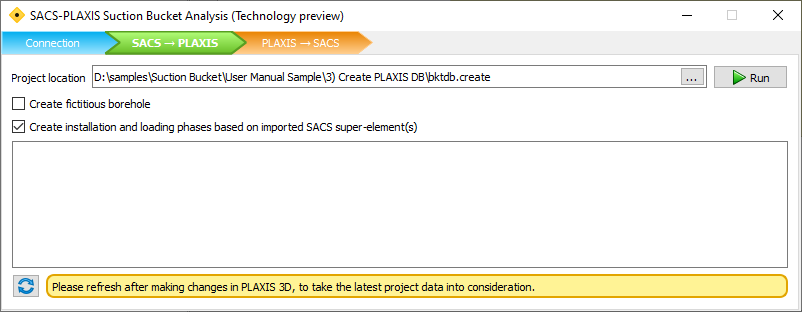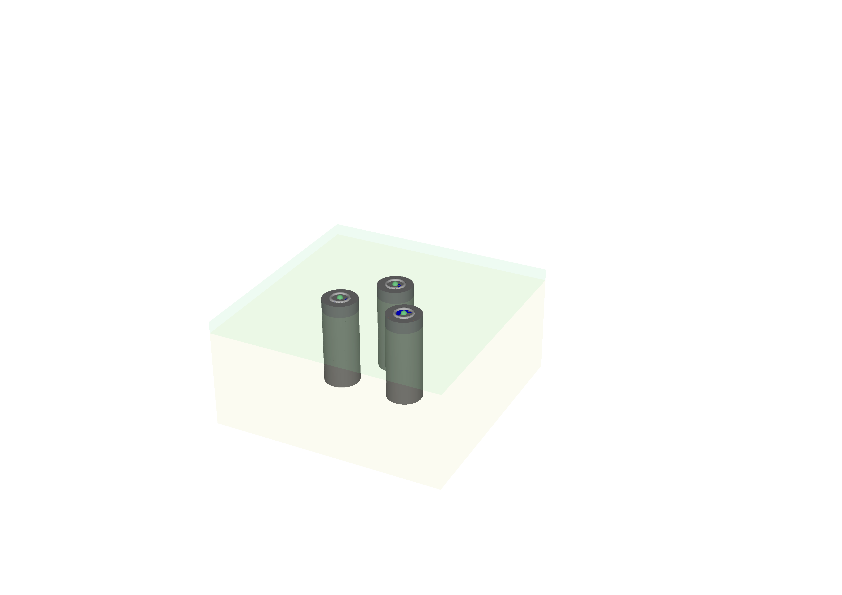Introducing SACS CONNECT Edition V15.1- CL
SACS CONNECT Edition V15.0 – SES release includes enhancements including:
Implement API LRFD 2nd Edition design code
Unity checks as per API LRFD 2nd edition are now available. These include updated provisions for conical and tubular strength checks. New strength checks for dented tubular sections have been added. Joint strength checks have also been updated as per the revised provisions.
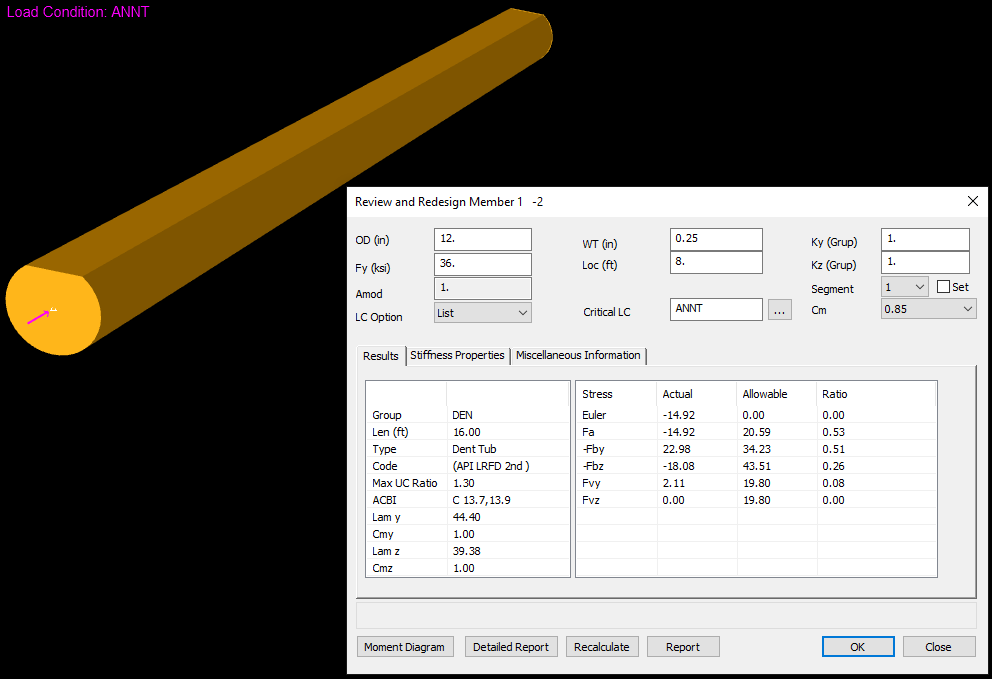
Extend bottom unbraced length option to AISC codes
Bottom unbraced length option (Column 46) on the GRUP line can now be used with AISC codes. SACS Postprocessor will automatically use the specified bottom unbraced length in unity check calculations for AISC codes if the bottom flange is in compression.
Introducing SACS Suction Bucket (Technology Preview)
The SACS Suction Bucket program generates a SACS model for the analysis and design of offshore structures with a suction bucket foundation. The bucket model is automatically generated using plate elements and the nonlinear interaction between the suction bucket walls and surrounding soil through a series of nonlinear springs. The nonlinear springs are automatically generated through the SACS-PLAXIS Suction Bucket Analysis Interoperability functionality.
The following are the highlights of the program features:
Advanced meshing tool to automatically generate the suction bucket model. The Suction Bucket program can also automatically include the ring and longitudinal stiffeners in the suction buckets using a series of simple input lines.
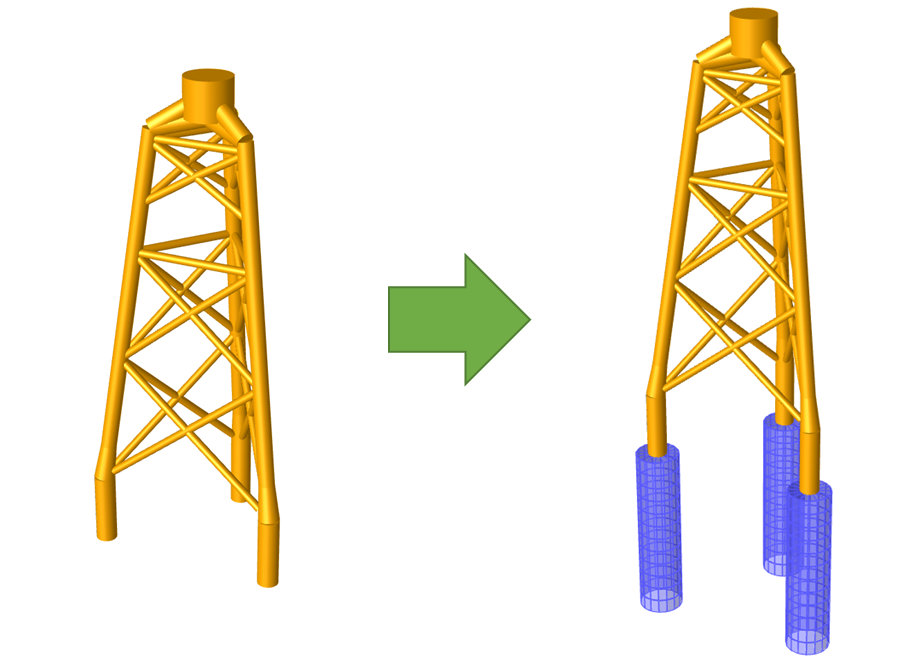
The SACS-PLAXIS Suction Bucket Analysis Interoperability automatically imports the SACS suction buckets model, the jacket stiffness, and the applied loads using superelement into the PLAXIS 3D program to analyze the soil-bucket nonlinear interaction.
Automatically generate nonlinear soils by fitting multilinear curves on the PLAXIS 3D stress results

The final suction bucket model is ready to use for any type of analysis in SACS including static and dynamic analysis, and ultimately post-processing to calculate stresses and code checks.
Stress Results in the Suction Bucket plate elements:
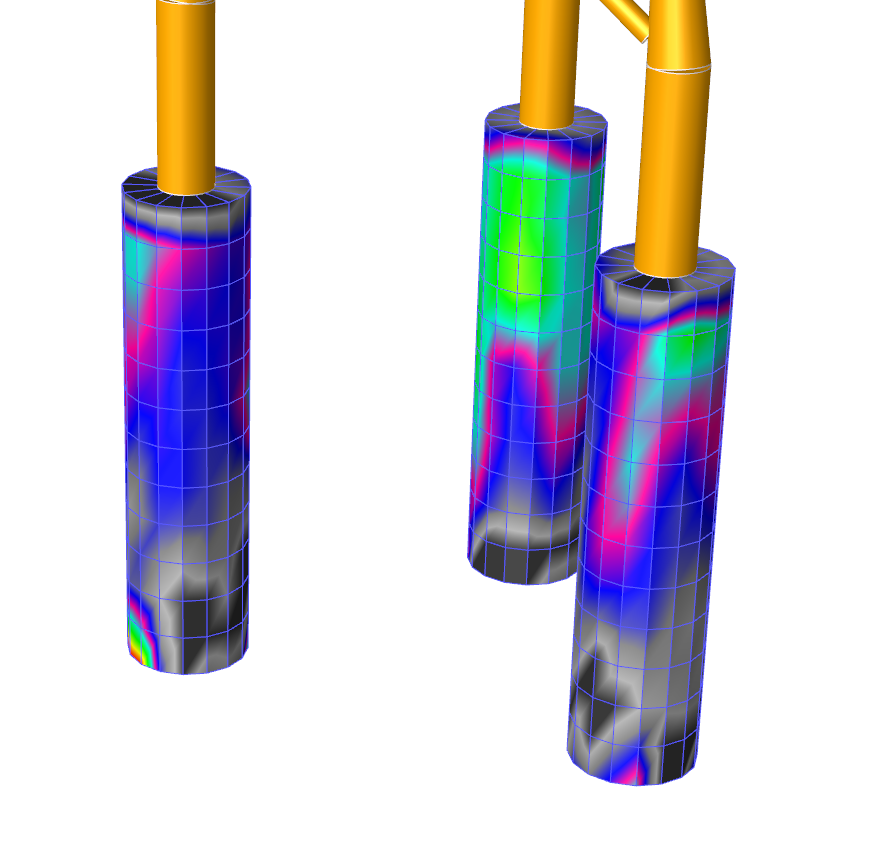
Modal Analysis:

Pile 3D - Attachment of structure on top (Technical Preview)
Pile 3D module has been is extended to read reactions of structure on top and apply them as pilehead loading for unlimited number of load conditions. With this feature, users can perform Monopile analysis using SACS model file which is suitable for Wind turbine analysis. To use this feature, new type of analysis can be chosen via the analysis generator in SACS Executive along with SACS model file and Pile3D input file as shown in the figure.
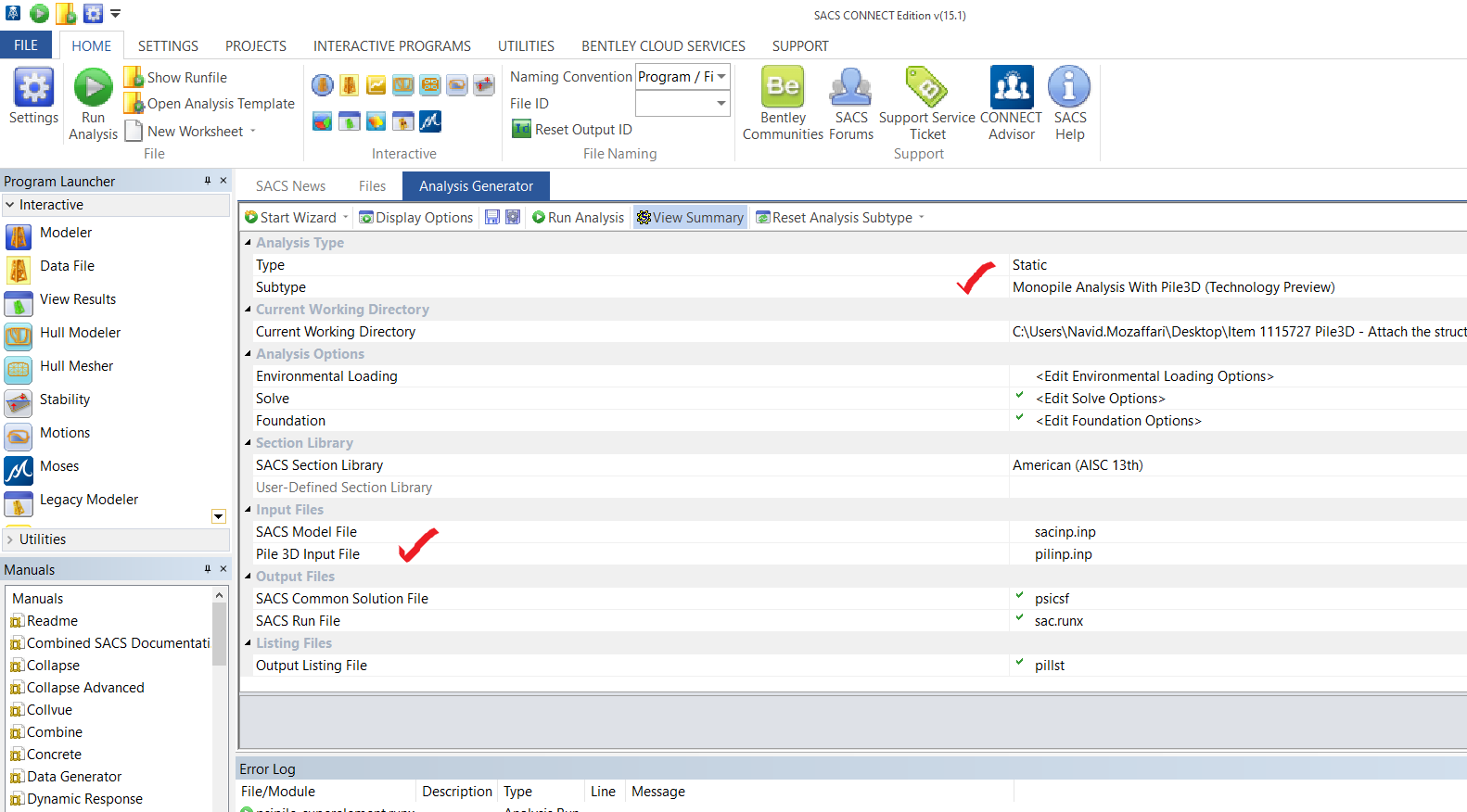
PSI – Distributed Moment, Base Shear and Base Moment calculation using Plaxis type curves (Technical Preview)
PSI module is extended to read M-theta (Soil bending), Base shear and Base moment curves and consider these effects in pile analysis. These curves were recently introduced by PISA project for rigid monopile analysis, i.e. large diameter monopiles. Plaxis Monopile Designer is the only product capable of generating these curves and with this feature PSI can read and utilize those curves. The option to read in the curves is available in SOIL LATERAL HEADER line. As it is shown in the figure, new input lines including SOIL BENDING HEAD, SOIL M-T, SOIL BASESHR HEAD, SOIL BH-V, SOIL BASEMOM, SOIL BM-T are introduced to read the data for curves similar to lateral and axial curves. The same feature has been implemented and released in Pile 3D module.

Advanced Solver (Technical Preview)
The advanced Solver, using iterative Krylov Subspace Solvers and Singular Value Decomposition, allows automatic detection and removal of rigid-body-motion for statically undetermined structures. Using this new feature, users can perform analysis of floating structures as well as the lift launch analysis without the need to introduce ad-hoc boundary conditions to limit rigid-body-motion. The Advanced Solver needs to be enabled via the Settings in SACS Executive under Analysis Settings. Different iterative solvers and rigid-body-motion removal can then be enabled using the SLVOPT line in the SACS input file.
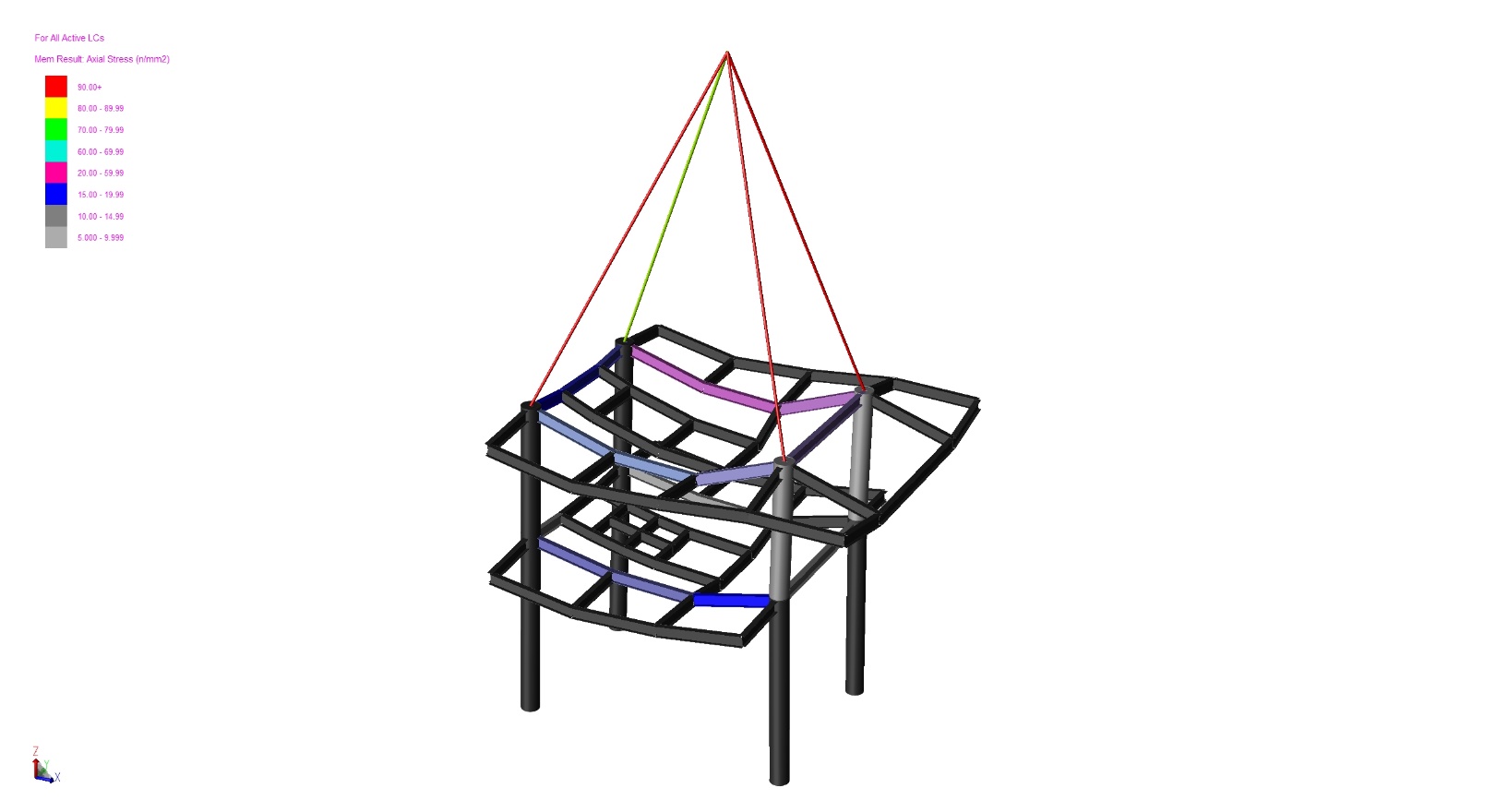
Lift analysis result with automatic rigid-body-motion removal
Explicit Stiffeners in the Joint Mesher (Technical Preview)
This new feature allows the user to create explicit stiffeners for tubulars. The stiffeners are automatically added as members (beam elements) inside the Joint Mesher. The explicit stiffeners can be created individually at a general orientation using the new PLTSTF line in the Joint Mesher module. Users can also create ring and longitudinal stiffener groups using RNGSTF and LNGSTF lines, respectively. The stiffener groups can then be added to tubular members using the MEMSTF line in the Joint Mesher input file.
Input model (left) and meshed model with added ring and longitudinal stiffeners (right).
SACS integration with Bentley’s iTwin Hub (Techical Preview)

SACS is now integrated with Bentley’s iTwin Services. iTwin Services is an open and scalable platform for managing and consuming infrastructure digital twins. SACS first offered integration with iTwin Design Review in version 15.0. SACS 15.1 now offers integration with iTwin Hub through the iTwin Analytical Synchronizer.
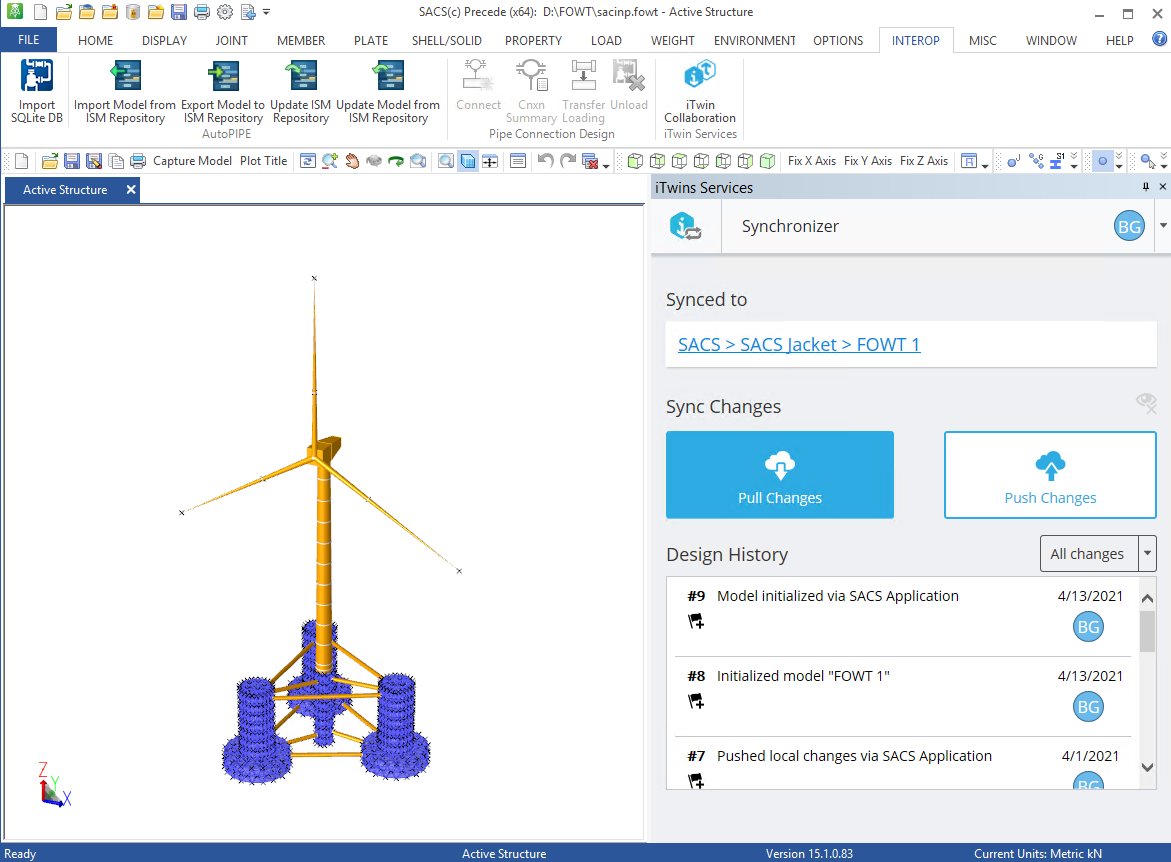
For more information visit the iTwin Services for Engineering Analysis Wiki.

